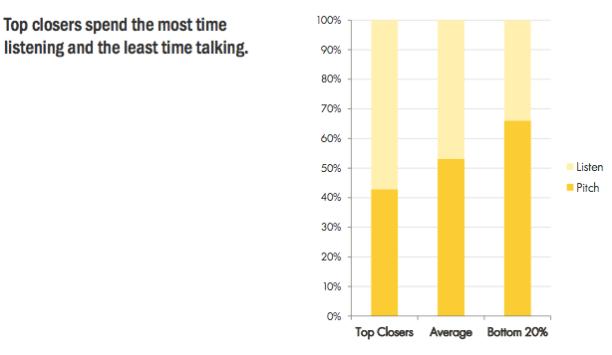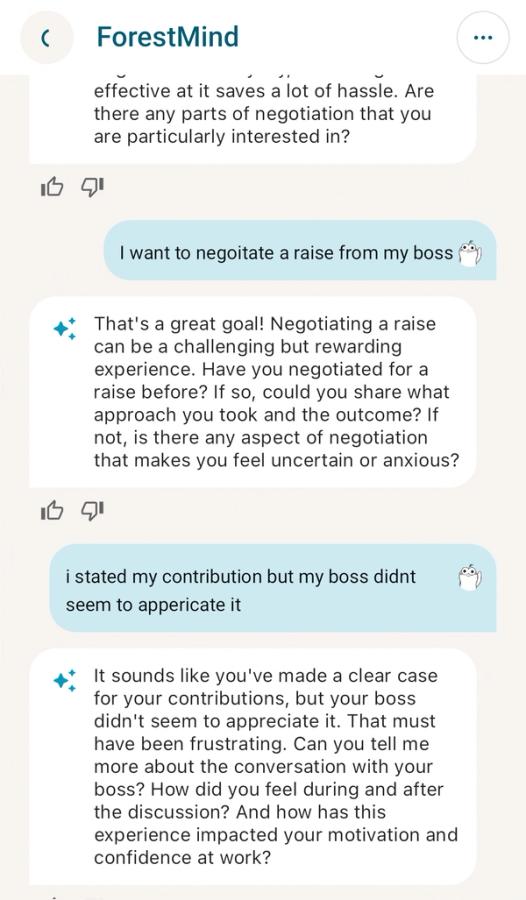
Ghosting and Avoidant Behaviour: Why We Pull Away and 3 Ways to Heal from It
Have you ever experienced ghosting? The two of you were chatting happily the night before, and the next day the person suddenly disappears, never replying again?
Negotiation expert Chris Voss highlights two voice tones that can be particularly useful in negotiations. The first is what we call a “playful voice,” which is slightly happier than your normal tone. This voice tone helps lower the other person’s defenses without being overly exaggerated — just a bit more cheerful than usual. It’s beneficial for keeping the conversation light and breaking tension.

I’d like to share with you three methods of negotiation. While these techniques aren’t magic cures that guarantee you’ll get everything you desire, I’m confident that these foundational points will significantly enhance your ability to persuade others.
The skill of persuasion is necessary for every role. For instance, subordinates may sometimes struggle with how to sell their ideas to their supervisors. Similarly, leaders often need to promote initiatives. We all have to persuade those around us to willingly and sincerely take part in activities.
From my own work experience, I frequently find myself needing to persuade my team and some clients. So, I’ve summarized some actions we should take and common mistakes we often make, to help everyone become a more effective persuader.
The first point, which I’ve noticed is a common mistake, centres on overlooking the question, “What’s in it for me?” This aspect is crucial in persuasion and business pitch. Many attempts to persuade others follow a pattern that fails to address this question. For instance, since establishing my company, I’ve frequently received partnership invitations. Often, these invitations are framed in terms of the organization’s attributes: its history, its reach of thousands or millions, and thus, a proposal to collaborate. However, from my perspective, such pitches are quite related to the collabration.
When attempting to persuade someone, it’s essential to understand a basic aspect of human nature: everyone is most concerned with themselves. If you’re inviting someone to collaborate, it’s less effective to focus solely on what your organization is and does. While a brief introduction is fine, the focus should shift to the benefits of collaborating with you.
Many people overlook this approach. If you find yourself needing to persuade someone, consider their perspective. Think about how taking the proposed action could make their life easier or better. In the workplace, for example, one might need to persuade a boss to approve an idea, promote, or offer a raise. Less effective methods of persuasion often revolve around the effort put into a project or the speaker’s contributions, implicitly asking for a “deserved” reward.
A more effective approach would articulate how adopting a proposal could streamline current projects or offer the speaker an opportunity to tackle more significant challenges, thereby contributing more to the organization’s goals. When trying to persuade someone, using empathy and active listening and highlighting “What’s in it for me?” is incredibly important.
The second tip I want to share is crucial when attempting to persuade others: never monopolize the conversation without allowing the other party the opportunity to speak and ask questions.

Interestingly, some market research studies have looked into the performance of various salespeople and found that the least effective salespeople spent about 60% of their time talking, leaving their clients with little time to express themselves. Conversely, the most successful salespeople only spoke 40% of the time, and much of that was spent asking their clients questions.
Here’s how I practice this in my work: I run a corporate consutlancy business and when I pitch to clients, my approach is straightforward. I briefly introduce our key points from the perspective of “What’s in it for me.” I explain how our training services will benefit their company, then I pause. I tell my clients that besides having the opportunity to introduce us, we’re also very interested in understanding the challenges they face or the main goals they have for the training. I ask them why they want to conduct this training and let them express what outcomes they’re hoping to achieve.
For instance, if you’re selling a plan to your boss, you might ask what the ideal outcome looks like for them. Then, lead them to articulate this vision. After they’ve shared, try to connect back to how adopting your proposal is the best method for achieving their goals. This approach is much more effective in persuasion.
Lastly, I want to share a technique related to non-rational persuasion: pay attention to your voice tone. This is a simple yet highly effective trick. The importance of monitoring your voice tone lies in its power to convey emotions, which can be contagious. If you express negative emotions through your voice during a persuasion or negotiation, especially when facing rejection, it can lead to a negative cycle, impairing effective communication.
Negotiation expert Chris Voss highlights two voice tones that can be particularly useful in negotiations. The first is what we call a “playful voice,” which is slightly happier than your normal tone. This voice tone helps lower the other person’s defenses without being overly exaggerated — just a bit more cheerful than usual. It’s beneficial for keeping the conversation light and breaking tension.
The second useful tone is a more serious one, akin to what Voss refers to as the “late-night FM DJ voice.” This tone, noticed for its calming effect, is ideal for situations where you need to firmly reject a request or set boundaries. The reason for its effectiveness is that rejecting someone can inherently feel uncomfortable, often leading to awkward or defensive reactions. For instance, responses like “600,000? Our maximum is only 400,000” or “600,000? Let me think about it” can create a sense of distance.
Using the “late-night FM DJ voice” in a negotiation, especially when discussing price, might go something like this: Instead of responding with tension to a high price, you use a calm, composed tone. For example, when told the price is 600,000, you reply, “I understand the value you’re bringing, but based on our budget, we’re positioned more comfortably around 400,000. Let’s explore how we can make this work for both of us.” This approach, marked by its calmness and clarity, helps in setting clear boundaries while being influential.

While the tips shared above provide a strong foundation for effective negotiation, the key to mastery lies in practice. That’s where MindForest, our AI coaching app, steps in to bridge the gap between theory and application.
We’ve crafted MindForest with the understanding that the best preparation for any conversation, especially negotiations, comes from hands-on experience. Our app simulates real-life negotiation scenarios, allowing you to practice and refine your skills in a risk-free environment. Beyond just practice, MindForest offers insights and feedback on your approach, turning each session into a valuable lesson we call “Insight Journal”.
Lastly, incorporating negotiation techniques can certainly enhance your ability to persuade and communicate effectively. Yet, it’s crucial to remember that the essence of meaningful negotiation lies not just in convincing others but in striving to understand their perspectives.
As one impactful saying goes, “When you fail to convince, try to understand.” This principle underscores the importance of empathy in consumer psychology, which often reveals new pathways to mutual agreement.
Discover practical psychology tips you can apply to your everyday life. From building resilience to improving relationships and finding work-life balance, our blog brings expert-backed insights that help you grow.

Have you ever experienced ghosting? The two of you were chatting happily the night before, and the next day the person suddenly disappears, never replying again?

This article breaks down the psychology of nonchalance, signs of a nonchalant dater, the debate nonchalant vs chalant, and what truly matters when forming modern relationships.

Have you ever felt so intensely drawn to someone that you couldn’t stop thinking about them—imagining every possible interaction, decoding every message, overanalysing every glance? If so, you may not be experiencing love, but something more specific: limerence.
Download MindForest and turn these insights into action. Get personalized support from ForestMind AI Coach, track your progress, and unlock your full potential.